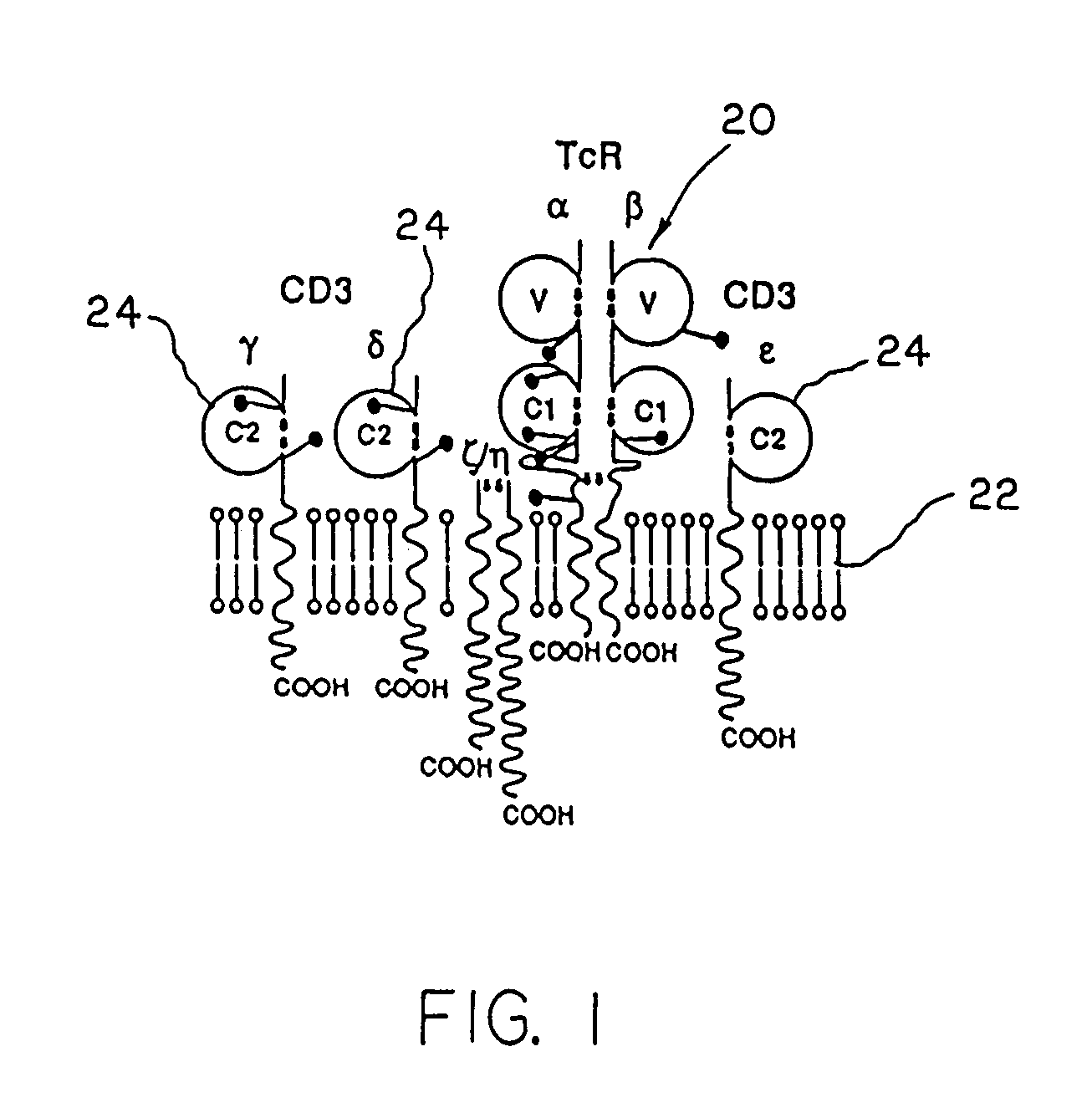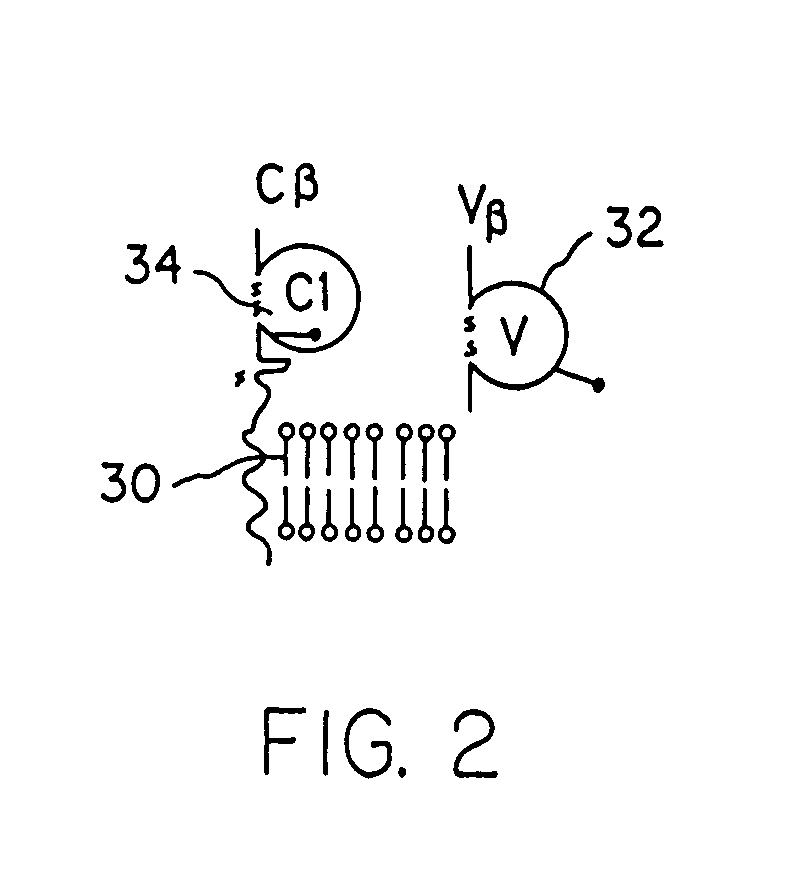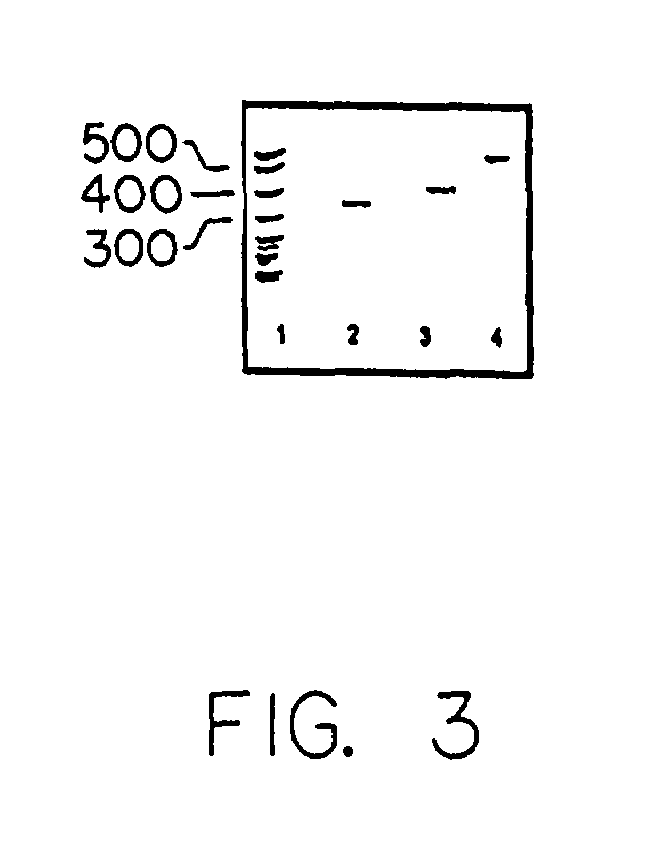Methods for identifying or diagnosing carcinoma cells with metastatic potential based on the measurement of lymphoid genes or their products in carcinoma cells
a technology of lymphoid genes and carcinoma cells, which is applied in the direction of material analysis, biochemistry apparatus and processes, instruments, etc., can solve the problems of loss of cell-to-cell adhesiveness and a detachment of tumor cells from the primary tumor bed, and the clinician is faced with great difficulty in diagnosing metastasis
- Summary
- Abstract
- Description
- Claims
- Application Information
AI Technical Summary
Benefits of technology
Problems solved by technology
Method used
Image
Examples
Embodiment Construction
[0046]FIG. 2 illustrates at 30 a tumor cell wherein germline or unrearranged Vβ gene and Cβ transcripts, illustrated at 32 and 34 respectively, are expressed on the tumor cell surface, as discussed in greater detail hereinafter. Other lymphoid gene products may also be expressed on the tumor cell surface. Since very few somatic mutations are found in T cell clones or T cell lines, Vβ may be an excellent target for diagnosis and immunotherapy. In this regard, Vβ6 positive syngeneic T cell tumors can be inhibited from growing by administering anti-mouse Vβ6 to mice (Kanagawa et al., 1989, J. Exp. Med. 170:1513-1521). Interestingly, the anti-tumor treatment of mice bearing T cell tumors by anti-Vβ antibody does not compromise the immune status of the mouse despite the fact that a significant proportion of peripheral T cells are eliminated by the treatment. In another study, one-third of Vβ chains were genetically deleted in certain mouse strains causing a deficit in the expressed reper...
PUM
| Property | Measurement | Unit |
|---|---|---|
| diameter | aaaaa | aaaaa |
| adhesiveness | aaaaa | aaaaa |
| adhesion | aaaaa | aaaaa |
Abstract
Description
Claims
Application Information
 Login to View More
Login to View More - R&D
- Intellectual Property
- Life Sciences
- Materials
- Tech Scout
- Unparalleled Data Quality
- Higher Quality Content
- 60% Fewer Hallucinations
Browse by: Latest US Patents, China's latest patents, Technical Efficacy Thesaurus, Application Domain, Technology Topic, Popular Technical Reports.
© 2025 PatSnap. All rights reserved.Legal|Privacy policy|Modern Slavery Act Transparency Statement|Sitemap|About US| Contact US: help@patsnap.com



